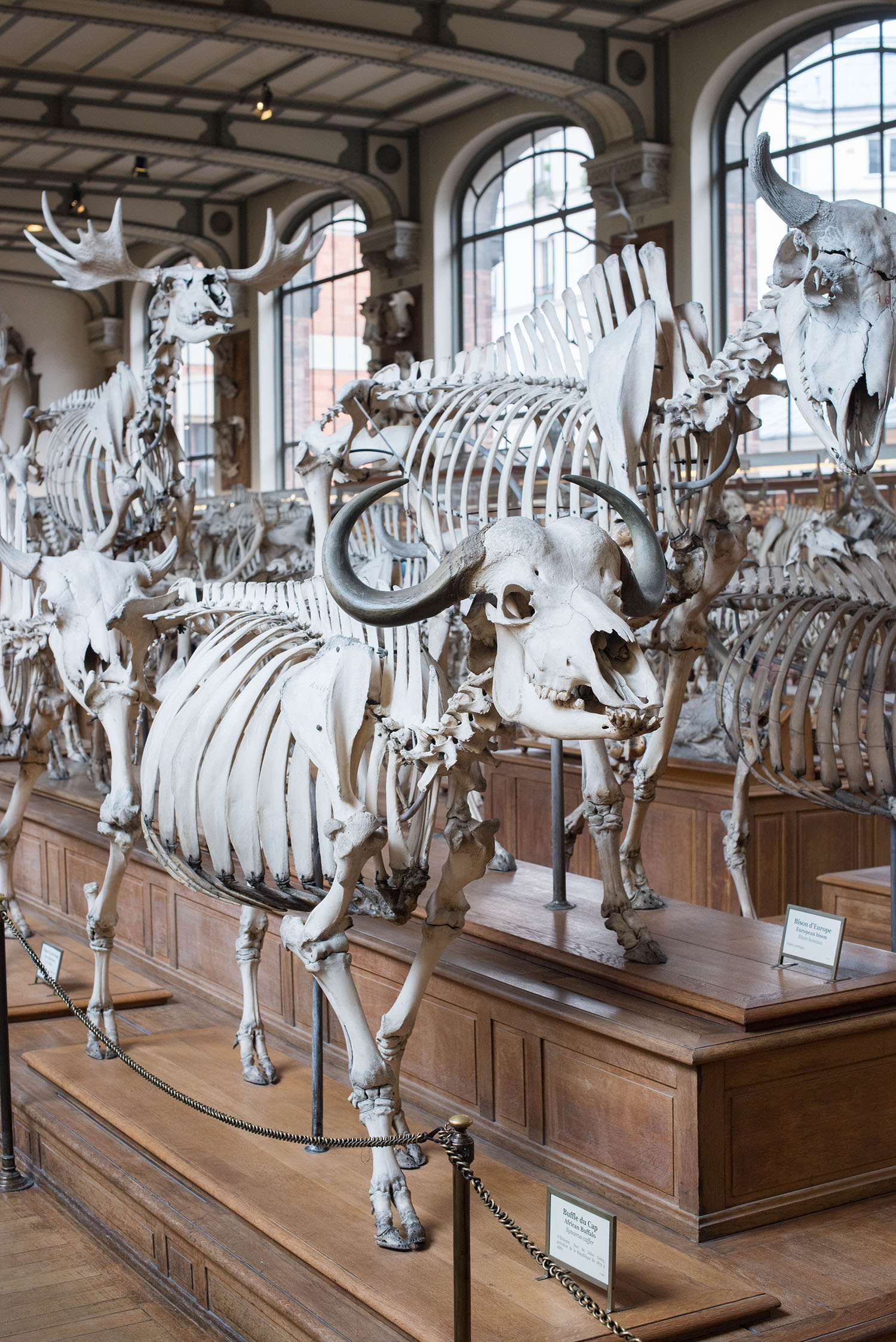
Galerie de paléontologie et d’anatomie comparée
2, rue Buffon
01 40 79 56 01
Je décrivais ma visite à la Galerie de paléontologie et d’anatomie comparée, un musée dans le Jardin des Plantes, à mes parents, et je disais que ça m’a donné l’impression de remonter dans le temps. “Bon, a priori,” m’ont-ils dit, “c’est ça un musée.” Apparemment, ma description n’a pas rendu justice aux captivants, mais légèrement macabre, expositions qu’héberge le musée. Même en écrivant cet article, j’ai du mal à trouver les bons mots pour vous expliquer ce que c’était de me flâner dans des salles plein de squelettes, où le temps semble avoir cessé d’avancer depuis 1912 – il paraît, selon les plaques commémoratives, que c’était en 1912 que le musée a reçu sa dernière donation majeure, juste avant la Grande guerre. Si j’exagère, ce n’est qu’un peu – quelques-unes parmi les légendes explicatives sont maintenant imprimées, mais la bonne partie furent écrites à la main, et d’autres, minutieusement tapé à la machine. Les spécimens dans le musée furent, en majorité, recueilli pendant les beaux jours de l’exploration, entre 1840 et 1920, excepté Lucy, qui habite une modeste vitrine au deuxième étage où elle peut facilement passer inaperçue. Le musée lui-même est un endroit où des défenses d’éléphant font toujours partie de la décoration; où toutes les cages d’escaliers ne sont pas illuminées car à l’époque de sa construction, on utilisait des bougies pour la lumière au lieu de l’électricité. L’âge d’or de l’exploration fut délimité par des matières principales insolites, maintenant démodées, et donc les spécimens de cet âge sont d’une pertinence qui se réduit. Cet âge, il faut reconnaitre, a été doré pour certains aux detriments de nombreux autres. La Galerie de paléontologie et d’anatomie comparée m’a captivée car elle ne conserve que ce qui est intéressant d’une période histoire qui a sans doute été difficile à vivre pour beaucoup de monde (et pour beaucoup d’animaux, aussi.) C’est vraie qu’elle ne raconte pas l’histoire entière, et qu’il faut en être conscient, mais jusqu’à ce qu’une vraie machine à explorer le temps soit inventer, la visiter est, selon moi, la meilleure manière de vivre, bien que provisoirement, une autre ère.
Oh wow, I had never considered visiting.
I would flip, because if its like you describe it, sounds like you’d enter a museum in the 20s era, untouched… clean of all modern touch screens and such, where all your attention is verted to the piece in display.
The idea of traveling back in time to certain places has always been something I day dream about, the closest I have been to this was when visiting Havana two years ago.
I could wander through places like this for hours… I love learning the history of a place and just generally walking around & soaking it all in – it truly is an amazing experience! And this museum certainly sounds like it was!! <3 Love all the memories you're creating Cee and I'm so happy you & Ian were able to make this trip a reality. SO inspiring and lovely to read about via the blog!! xo
http://www.girlandcloset.com
Great post! 🙂
xxBasia
This museum looks so amazing!!! I wanted to be a paleontologist when I was growing up….so I really love this 🙂
xoxo
Ileana
Novelstyle Blog
Wow! That fact that it hasn’t been updated in so long makes it even more appealing to me. I can only imagine what a visit would be like. Your photos are gorgeous!
It’s hard to grasp the idea that a place could remain exactly the same for 100 years, especially when we seem to be in a day and age where things must constantly change and ‘improve’. I have always had an appreciation for old things, when proper care and attention to detail was given. I’m sure each of those handwritten cards was done perfectly.
Chic on the Cheap
I would love to see this! It must be amazing in person. You have so many valuable experiences Cee. Lucky girl >.<
http://www.averysweetblog.com/